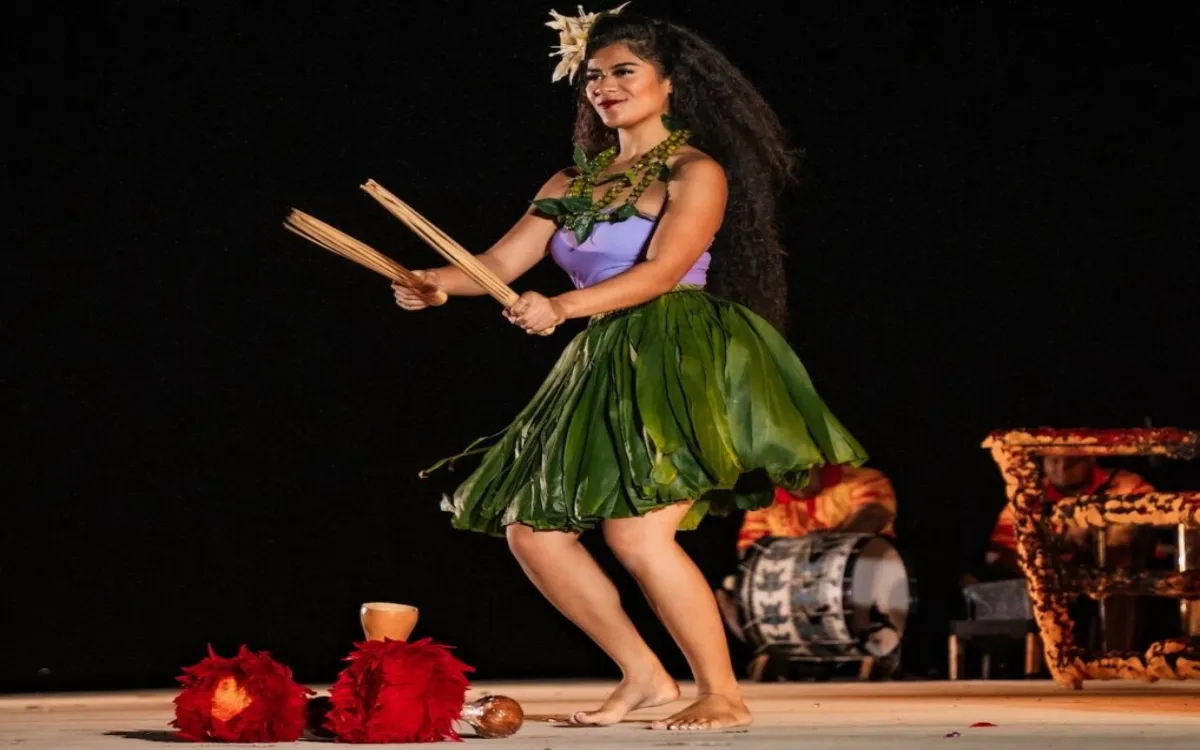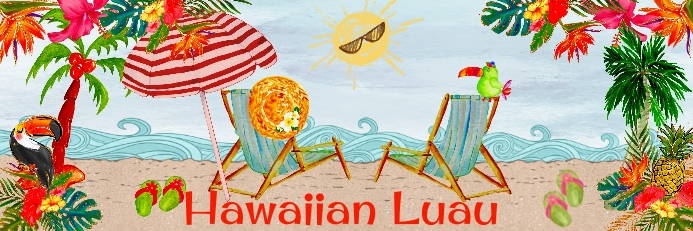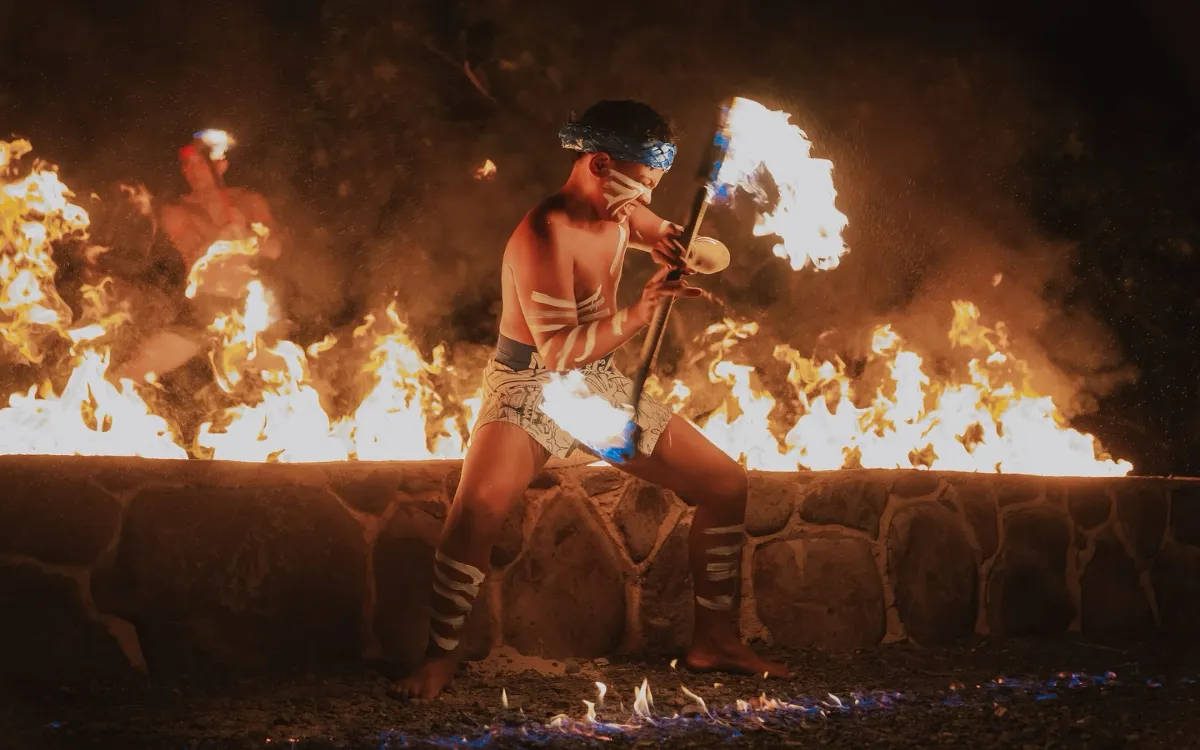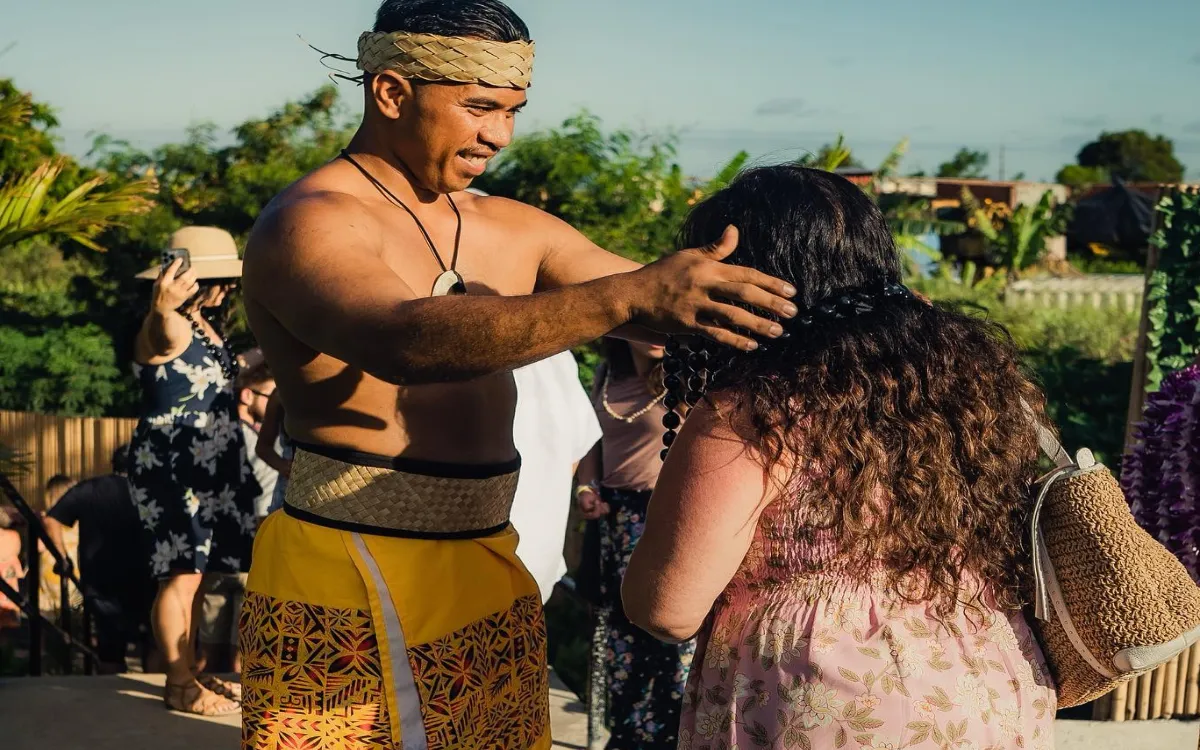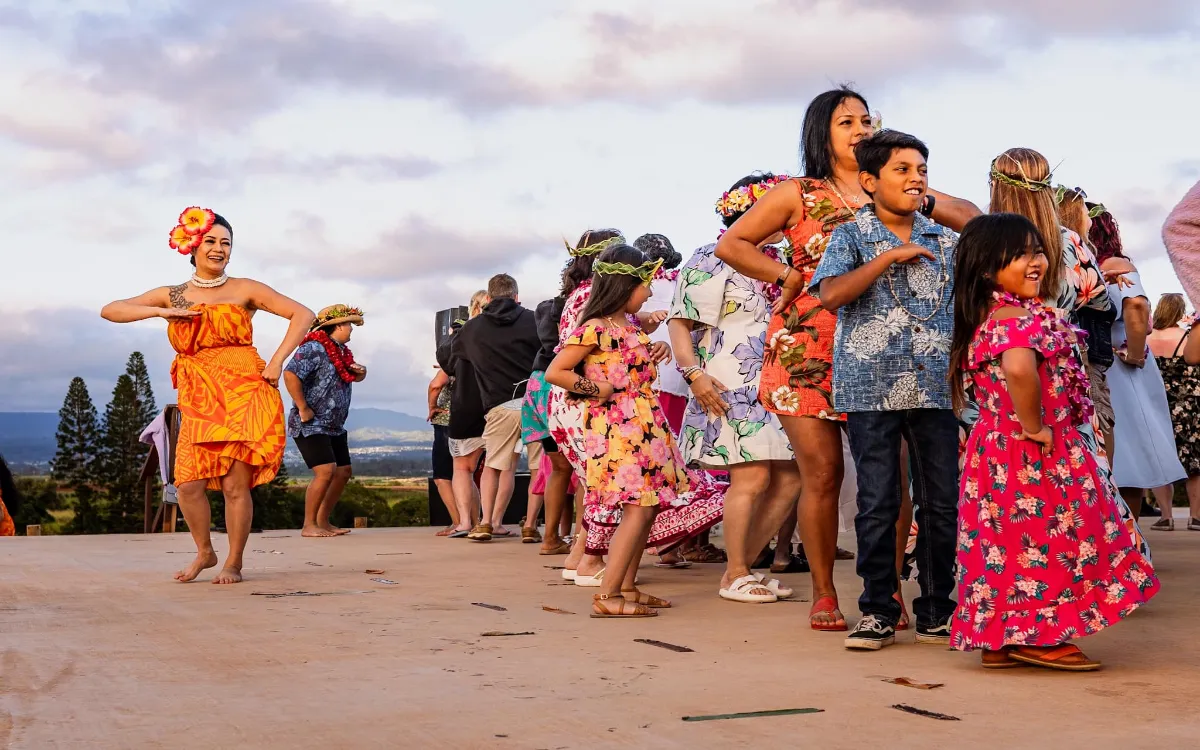Discover Mauka Warriors Luau: hula, warrior dances, fire-knife dance, and a traditional buffet. Experience the best luau show in Oahu you can’t miss!
When you join the Mauka Warriors Luau, you not only experience the traditional cultural space of the native Polynesian people but also hear detailed explanations from cultural practitioners about the origins and meanings of each ancient ritual. In this article, Mauka Warriors reveals fascinating truths about the ancient Hula dance is Hawaii’s cultural soul from its sacred beginnings to its modern celebrations.
Mauka Warriors: An Authentic Hawaiian Cultural Experience Luau
When you set foot on the island of Oʻahu, one of the must-do experiences is Mauka Warriors Luau. It is more than just a dinner show, it is a journey back to the roots of Hawaiian culture, where food, music, rituals, and the Hula dance weave together into a vivid tapestry of Polynesian identity.
What sets Mauka Warriors apart from many commercialized luaus is its authenticity and intimacy. Instead of being merely a staged performance for tourists, this luau recreates the true spirit of ancient Hawaiian gatherings: people eating together, singing together, dancing together, and sharing the stories of their ancestors.
The space of Mauka Warriors is designed like a traditional Hawaiian village, with firelight flickering, drums echoing, and chants resonating in the air. In this atmosphere, guests are transported back hundreds of years, to a time when the first Hula dances were performed to recount legends of the gods, the ocean, and the earth mother of Hawaii.
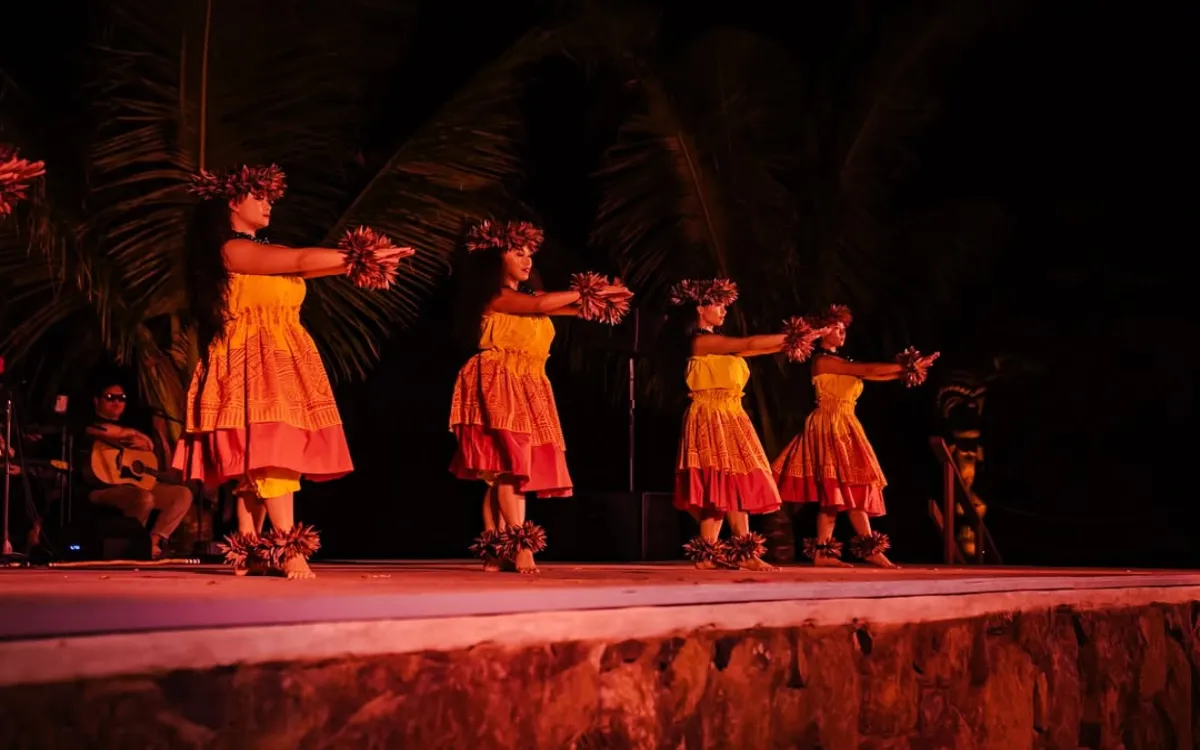
Hula dance at Mauka Warriors
The experience is made complete with traditional food: from tender imu-roasted pork cooked in an earth oven, to savory grilled fish and fresh tropical fruits. Each dish is not only a feast for the senses but also a piece of cultural heritage passed down through generations.
It is this blend of art, cuisine, and spirituality that creates the special allure of Mauka Warriors Luau. It is not only a place to watch and taste but also to feel and understand: the people of Hawaii, the aloha philosophy of life, and their profound connection with nature.
The Hula Dance: The Soul of Mauka Warriors
If there is one symbol that represents the soul of Hawaii, it is surely the Hula dance. Hula is not merely a performing art. For centuries, it has been regarded as the unspoken language of the ancient Hawaiian people. Before writing existed, Hula was their way of preserving and transmitting collective memory, the sacred stories of their origins, of nature, and of the universe.
Every hand movement, every step, every glance in Hula carries meaning. Hands can draw the waves of the sea, the blowing wind, or the rising sun; footsteps represent the heartbeat of the earth; eyes reflect the soul and emotion of the storyteller. Combined, Hula becomes an epic told through the body of the vast ocean, mighty volcanoes, guardian deities, love, and daily life.
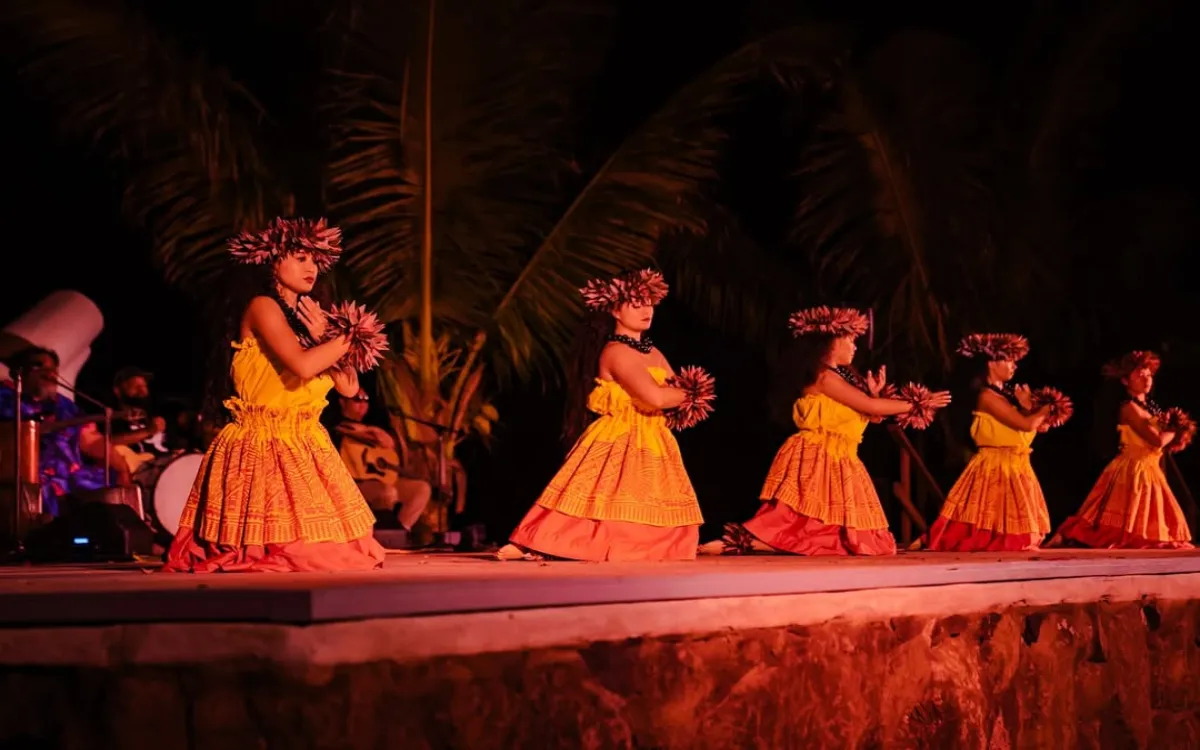
This dance is considered the soul of Hawaii
Thus, Hula is the traditional dance that connects humans with the earth and sky, past with present, and art with spirituality. That is why even today, when people think of Hawaii, the first image that comes to mind is often a Hula dancer wearing flower leis, smiling brightly, embodying the eternal aloha spirit.
Fascinating Facts About Ancient Hula
Hula is not only an art form but also a spiritual and historical lifeline, binding Hawaiians to their gods, their land, and their heritage. Here are 10 intriguing facts about this cultural treasure:
- Hula began as a sacred ritual
In ancient times, Hula was tied to religious ceremonies. Dancers often performed in honor of the gods, especially Pele, the revered volcano goddess. Each movement and chant was a form of prayer, sacred and solemn.
- Hula was a way to preserve history
Before writing, Hawaiians used Hula as a living language to pass on knowledge. Through Hula, they told myths, genealogies, stories of the land, and major events. It was both performance art and a historical archive.
- Traditional music was simple yet mystical
Unlike modern performances with ukuleles and guitars, ancient Hula Kahiko relied only on pahu (drums), ipu (gourd percussion), and chanting. The raw, resonant sound created a sacred, mysterious atmosphere, evoking the mythic world.
- Hula was once banned
In the 19th century, Western missionaries condemned Hula as “pagan” and sought to ban it. Thanks to the resilience of the native community and support from Hawaiian royalty, Hula survived and was restored. Today it is celebrated as a timeless heritage.
- Every movement carries meaning
Nothing in Hula is random. Hands mimic waves, wind, or sunlight; feet echo the earth’s heartbeat; eyes convey emotion and soul. This makes Hula not only beautiful to watch but also deeply symbolic.
- Hula has different styles
Hula Kahiko: Ancient, ritualistic, with bark-cloth costumes, ti leaves, drums, and chants.
Hula ʻAuana: Modern, influenced by the West, with ukuleles, guitars, and colorful skirts.
Together, they reflect Hawaii’s journey from sacred past to joyful, globalized present.
- Grass skirts are not traditional
The grass skirts popularized by movies are not authentic. Ancient Hawaiians wore kapa (bark cloth), lei (flower garlands), and ti leaves. All made from nature, symbolizing harmony with the earth.
- Hula embodies the spirit of “aloha”
Aloha is not just a greeting, it is Hawaii’s philosophy of love, sharing, respect, and harmony. Hula is the art form that carries aloha, making audiences feel the love for people and nature.
- Hula is taught in “hālau hula”
Hula is not just learned for show, but passed down in traditional schools called hālau hula. Students study not only movements but also chants, instruments, costumes, and rituals preserving its sacred essence for future generations.
- There is even a “Hula Olympics”
Today, Hula thrives at the Merrie Monarch Festival, considered the “Olympics of Hula.” Here, the best hālau from Hawaii and beyond gather, turning Hula into a global stage of cultural pride.
Hula at Mauka Warriors Luau: From Ritual to Experience
What makes Mauka Warriors unique is how it brings Hula back to its original spirit, a blend of ancient Hula Kahiko and modern Hula ʻAuana.
By firelight and the beat of drums, you will witness solemn Hula Kahiko dances, each hand gesture and step carrying sacred meaning, reenacting legends of Pele, the ocean, and Hawaii’s earth mother. In that moment, time seems to rewind centuries, immersing you in an ancient Hawaii where Hula bridged humans and gods.
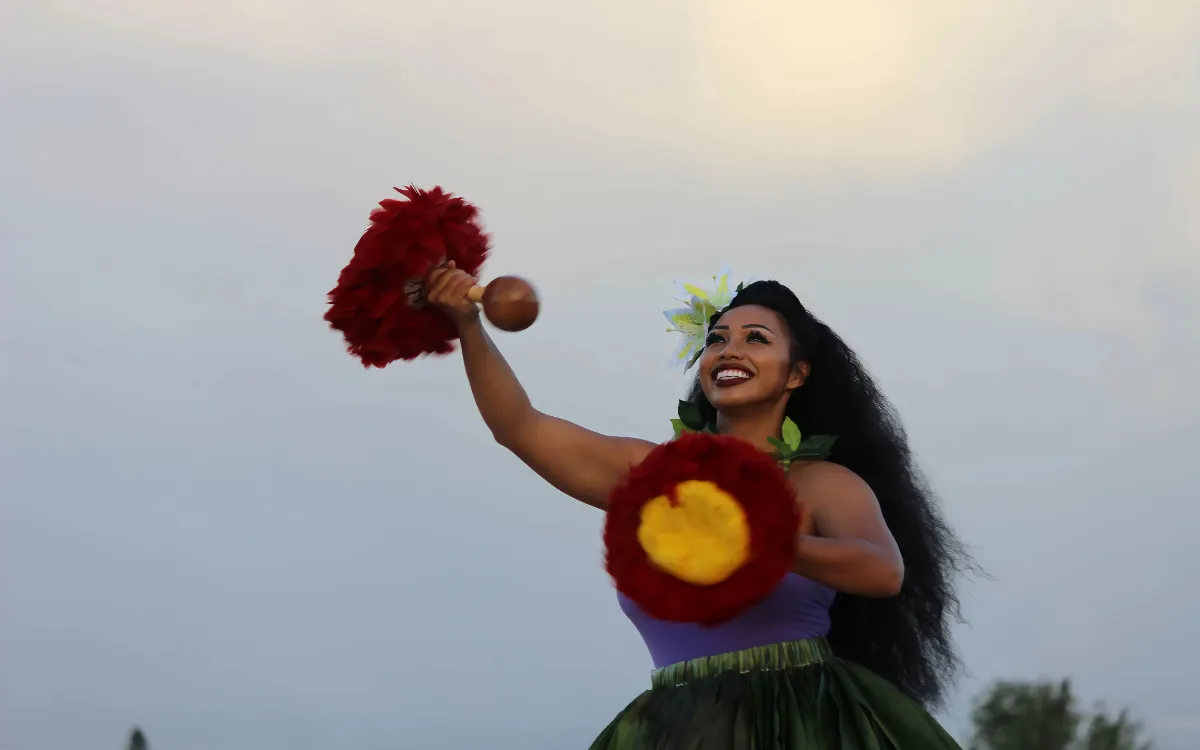
A dancer performing the Hula ʻAuana
Then, the atmosphere shifts to lively and colorful Hula ʻAuana. Ukulele melodies, guitar rhythms, and the radiant smiles of dancers give Hula a modern face: joyful, free, and vibrant. This is Hula today: a heritage that continues to flourish, adapting to the times without losing its roots.
The harmony of the two styles creates not just entertainment, but a heartfelt experience: from the sacredness of ritual to the vitality of community. That is why many who leave Mauka Warriors realize that Hula is not merely performance, it is truly the soul, memory, and identity of the Hawaiian people.
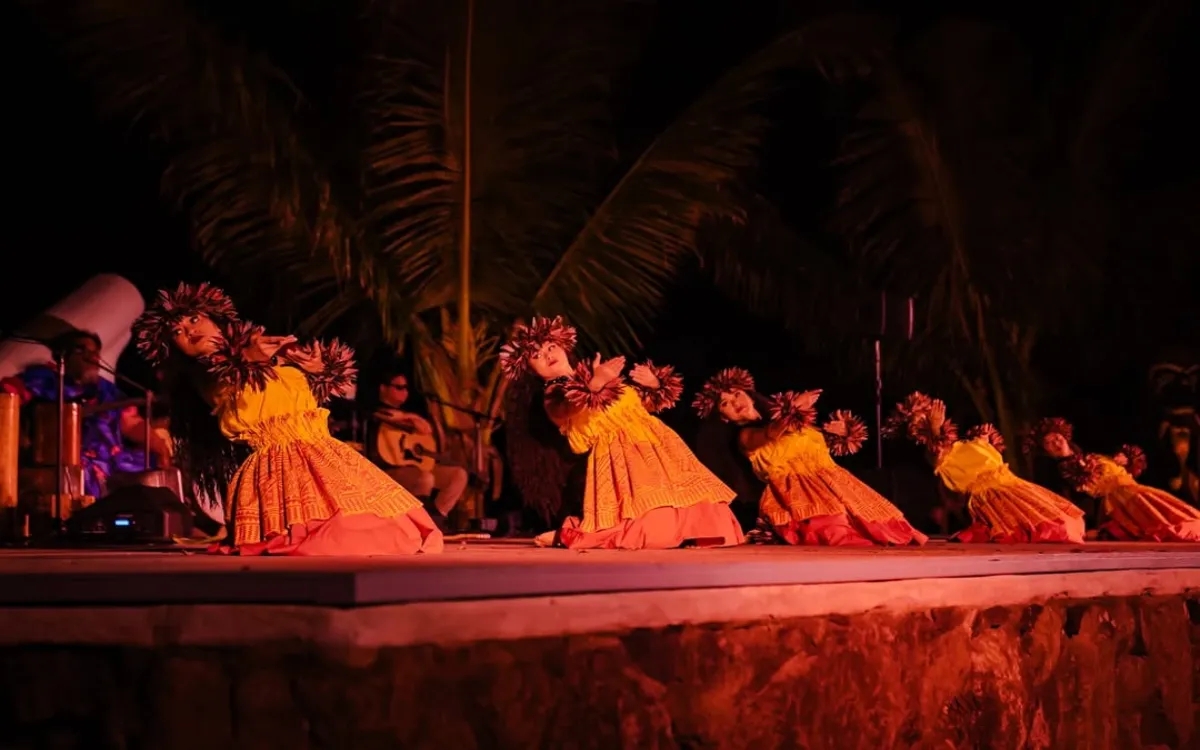
This is the ancient Kahiko Hula
If you want to truly touch the heart of Hawaiian culture, spend an evening at Mauka Warriors Luau. Here, you will not only enjoy a traditional feast but live in the rhythm of drums, the movement of Hula, the glow of fire, and the eternal aloha spirit.
Mauka Warriors Luau is truly a journey across time from sacred rituals to communal joy showing why Hula is regarded as the undying soul of Hawaii.


